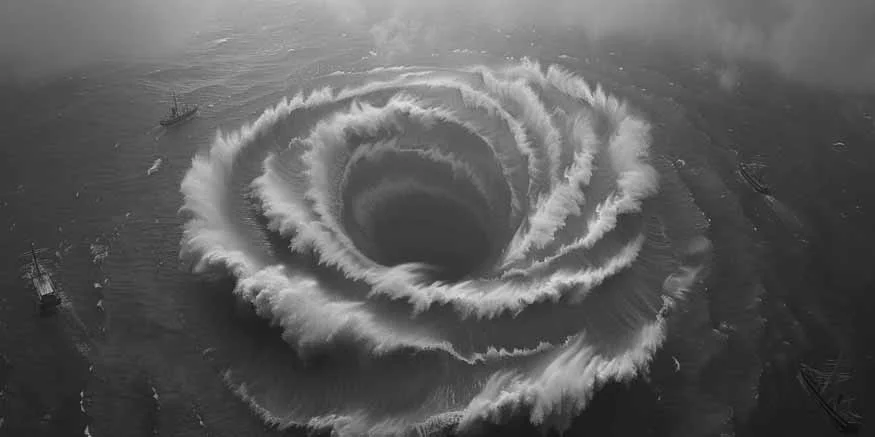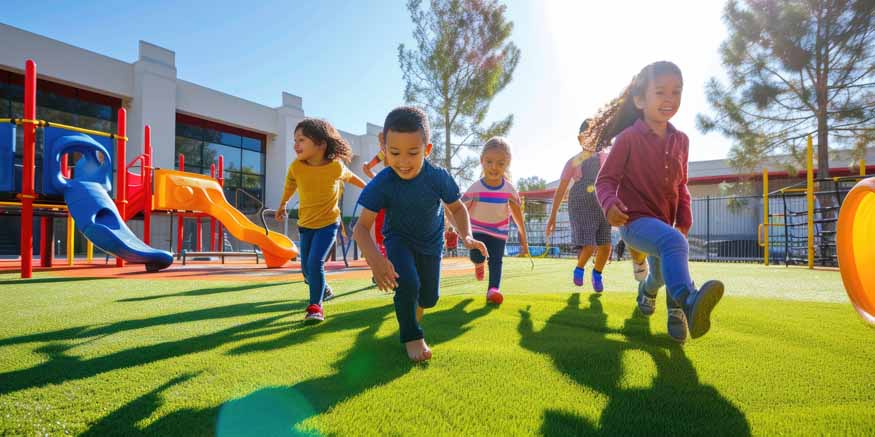A tornado is a spinning column of air that originates from the sky. When warm and cool air collide, it forms large thunderstorms. Tornadoes can look like rotating funnels and have extremely strong winds. When tornadoes occur, it is essential to stay safe by paying close attention to alerts. In this blog, we will explore tornado facts for children, including the causes of tornadoes, types of tornadoes, and tornado safety tips.
Also read: Chaos Theory Explained: The Butterfly Effect Connection
Formation of Tornadoes
Tornadoes usually form when warm, moist air mixes with cool, dry air during powerful thunderstorms. This interaction creates an unstable environment, and the wind patterns can result in the development of a turning updraft within the storm. If this updraft strengthens and tightens, it has a chance of creating a tornado.
Types of Tornadoes
Let’s explore the types of tornadoes:
- Rope Tornado
- Wedge Tornado
- Cone Tornado
- Multivortex Tornado
- Satellite Tornado
- Landspout
- Waterspout
Description: Thin and narrow tornado that often resembles a rope.
Size: Relatively weak and small compared to other types.
Description: Wide tornado with a visible condensation funnel, forming a wedge shape.
Size: Can be very large and powerful, causing significant damage.
Description: Tornado with a tapered, cone-shaped appearance.
Size: Variable, ranging from narrow to wide.
Description: Tornado with multiple smaller vortices rotating around a centre.
Size: Can vary from small to large, with multiple vortices increasing its destructive potential.
Description: Smaller tornadoes that orbit a larger, more dominant tornado.
Size: Typically smaller in size compared to the main tornado.
Description: A tornado that forms from the ground up rather than descending from a parent thunderstorm.
Size: Usually weaker than tornadoes associated with supercells.
Description: Tornado that forms over water and can move onto land.
Size: Varies, and they are typically less powerful than tornadoes over land.
Also read: Earthquakes: Causes and Fascinating Facts
Tornado Facts for Students
Understanding tornadoes involves delving into some intriguing and important facts that contribute to the overall knowledge of these atmospheric phenomena:
- Wind Speeds
- Scale
- Formation Conditions
- Tornado Seasons
- Common Locations
- Warning Systems
- Short Lifespan
Tornado wind speeds can range from relatively weak to extremely powerful.
Tornadoes are graded on the Enhanced Fujita (EF) scale, with EF0 being the weakest and EF5 being the strongest. The scale analyses wind speed and damage.
Tornadoes are most common in certain parts of the world, but they can occur anywhere.
Tornadoes are common in spring and summer when warm, moist air mixes with cooler, dry air masses.
Tornadoes happen more frequently in some areas, known as Tornado Alley in the United States, due to the influence of colliding air masses.
Weather analysts monitor conditions and issue tornado warnings using advanced technology like Doppler radars and satellite imagery. Public awareness and preparation are essential in tornado-prone areas.
While tornadoes can be highly dangerous, they often have very short lifespans. Many tornadoes last only a few minutes, but they can cause significant damage during that time.
Tornado Safety Tips
Here are some important tornado safety tips:
- Listen to Warnings
- Identify Safe Places
- Practice Drills
- Stay Informed
- Protect Your Head
Pay attention to weather alerts and tornado warnings.
Know where to go during a tornado—basements, storm shelters, or interior rooms.
Conduct tornado drills regularly to be prepared.
Use weather radios for updates, especially during storms.
If possible, wear helmets for head protection.
Also read: Sundials: Meaning, History, Types, and Interesting Facts
Causes of Tornadoes
Here are some important causes of tornadoes:
- Air Collision
- Unstable Atmosphere
- Wind Shear
- Updraft Rotation
- Mesocyclone Development
- Tornado Touchdown
- Thunderstorms
Tornadoes frequently happen when two opposing air masses collide. Warm, moist air from the Gulf of Mexico typically mixes with cold, dry air from Canada. This collision sets the stage for the formation of powerful thunderstorms, which can lead to tornado creation.
When warm air near the ground rises quickly, the atmosphere becomes unstable. The rising warm air creates an ideal environment for the development of severe weather.
Wind shear is a common cause of tornadoes. A change in wind speed and direction with height is referred to as wind shear. Winds blowing at different heights at different speeds and in different directions create a spinning effect in the atmosphere, which is essential for tornado formation.
Within a severe thunderstorm, a powerful updraft can develop. As this updraft intensifies, it tilts the rotating air from horizontal to vertical, leading to the formation of a mesocyclone—a rotating updraft.
The mesocyclone becomes a critical precursor to tornado formation. As it intensifies, the rotating updraft tightens, resulting in a concentrated column of rotating air that extends from the base of the thunderstorm to the ground.
As the mesocyclone strengthens, a tornado descends from the thunderstorm and interacts with the surface of the earth. The visible funnel-shaped cloud is a sign of the rotating air.
Tornadoes are frequently associated with supercell thunderstorms, which are large, rotating thunderstorms with strong updrafts. These conditions create the ideal environment for the development of powerful mesocyclones and tornadoes.
Also read: Amphibians: Interesting Facts Kids Will Enjoy
Effects of Tornadoes
Here are some important effects of tornadoes:
- Ecosystem Renewal
- Nutrient Redistribution
- Biodiversity Promotion
- Forest Succession
- Natural Selection
- Atmospheric Pressure Regulation
- Scientific Understanding
- Water Cycle Influence
Tornadoes may occur as natural disturbances in the environment, promoting ecosystem renewal. In some cases, the damage caused by tornadoes allows plant and animal populations to regenerate.
Tornadoes can spread nutrients throughout ecosystems. The debris left behind by a tornado may include organic matter that enriches the soil in the affected area.
The disturbance caused by tornadoes can create diverse habitats, fostering biodiversity. Newly formed open spaces may provide opportunities for the establishment of different plant and animal species.
Tornadoes may initiate a process known as forest succession in forested areas. The open spaces created by fallen trees allow new vegetation to grow, contributing to the dynamic nature of forest ecosystems.
Tornadoes, by influencing ecosystems and habitats, can contribute to natural selection. Species that are better adapted to disturbances may thrive in tornado-prone regions.
The intense winds associated with tornadoes contribute to atmospheric pressure regulation. While this is a small-scale effect, it reflects the interconnectedness of weather systems.
Studying tornadoes contributes to a deeper understanding of atmospheric and weather dynamics. The data collected from tornado research aids meteorologists in improving forecasting models and enhancing early warning systems.
Tornadoes, as part of larger weather systems, play a role in the water cycle. They can contribute to the redistribution of moisture, influencing precipitation patterns in certain regions.
At EuroSchool, we understand the importance of exploring the complexities of tornado formation, types, and facts. This not only improves students’ scientific knowledge but also enhances their understanding of the potential impacts on communities and the environment. As students explore the amazing powers of tornadoes, they gain a deeper appreciation of natural forces and the importance of safety in tornado-prone areas.









